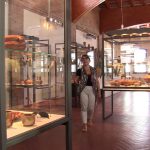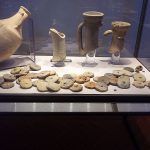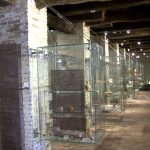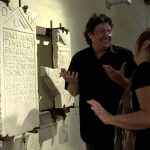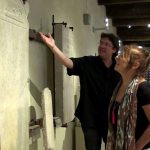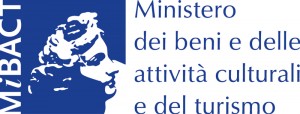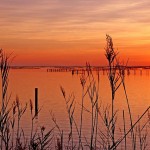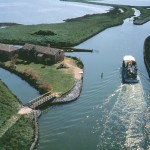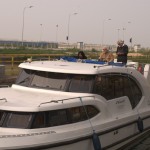With a local fisherman as a guide
Comacchio and Voghiera: Ancient Po Delta
Archaeological slow tour following the river Po untill its delta
By Syusy Blady
Comacchio is the town where the triumph of the engineering control of waters takes over. The word Cumaculum meant “little wave”. The ability to control the Po waters was part of the heritage of the populations living on its Delta area, necessary to make the post out of the river. The Po crossed the Po valley and was like a water highway used for trades and commerce… Sailing on the rivers one could go toward the Alps, until the central and northern Europe. It happened!
Comacchio could have been like Venice, indeed. It never reached Venice’s glory, mainly because of the constant cover-up caused by debris carried by the river itself. Comacchio arose thanks to the presence of the river Po (by the end of VI century a.C.) and it decayed because of the misfortune of lying on the Delta of a big river which gradually led to silting. Everything prospered both for Comacchio, until the coast moved away and decreed the collapse of businesses.
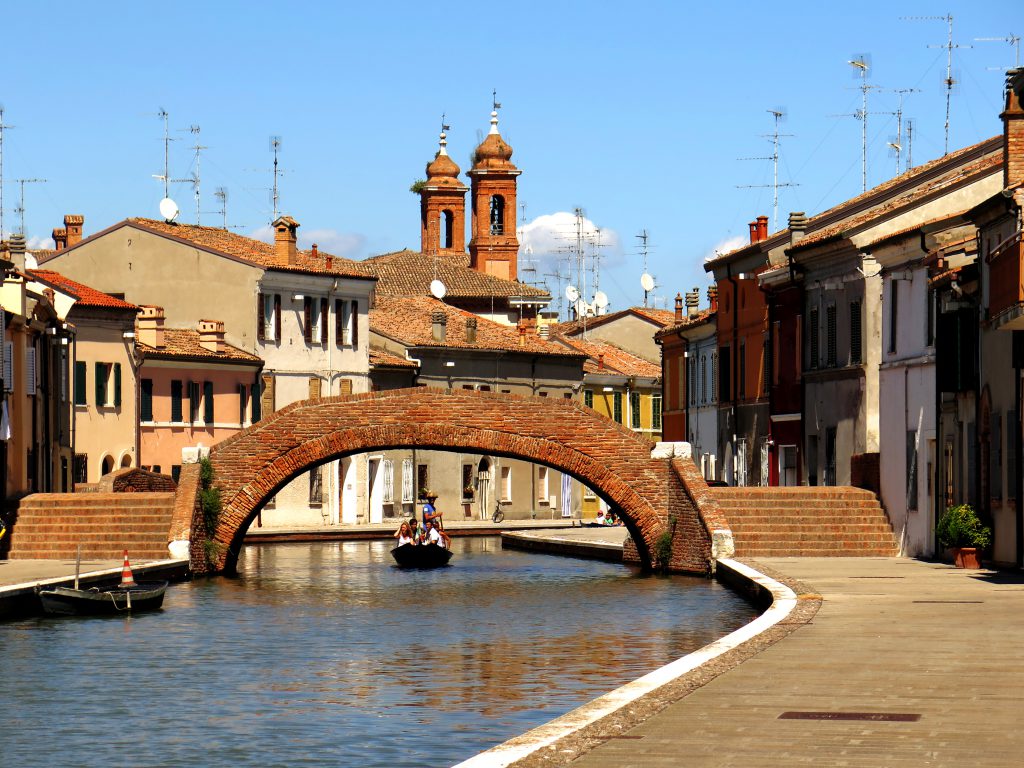
Comacchio by Flickr user Alata
The local Roman Ship Museum shows that by Roman times businesses were still flourishing in Comacchio. This ship is a famous Roman ship found covered in sand,dating back to the Augustan era. It was a sewn boat: the planking was held together by strings, an ancient and very effective technique realised with great skills. The ship carried lead ingots. Why, you ask? Maybe they were to be used for a aqueduct or some water pipes. However, on the wrecked ship there was also everything necessary for the crew: some amphorae for wine and olive oil, some crockery for cooking and even small votive temples. The little temples were dedicated to Aphrodite or Venus, accompanied by a Priapus showing his member as he is the god of gardens and fertility. Isn’t it amazing? They used to pray in front of all this… The Romans were much less tingly than us!
- Syusy at the Roman Ship Museum
- Syusy at the Roman Ship Museum
- Amphorae and Crockery by Daniel Ventura
Voghiera and the Delizia of Belriguardo
Leave Comacchio by bike along the old route that led to the Adriatic sea, where there once was the Po Delta. In the open fields there is the archaeological site of Voghenza, the remains of a Roman necropolis. An old settlement where the Delta once was, but now no longer is. The river changed its course dramatically and Voghiera as well was covered up and lost its splendour.
What was found in Voghiera can be seen in yet another museum located inside the Delizia di Belriguardo. The so called Delizie were summer residencies where the Este Family members used to move the whole court of Ferrara, in certain seasons, to enjoy the beauties of the countryside. The splendour of the Delizia di Belriguardo can be guessed already from its scale model. Is not by chance that the Duke of Este decided to come here on holiday! The Delizia Estense was easy to reach by boat and it could host around 1,000 people, including the court, the guests, the servants, and more than 800 horses! The huge Salone di Rappresentanza of the Este was basically a large hall where the court life was held. The Este could host here all the greatest artists who granted Ferrara its popularity and success: Ariosto, Tasso, Lucrezia Borgia.
- Delizia del Belriguardo, museum
- Delizia del Belriguardo, Syusy e Valentino Nizzo
- Delizia del Belriguardo, Syusy e Valentino Nizzo
Before the Este Family, the Etruscans and the Romans had already understood the potential of this territory. The Romans in particular left a significant trace here: the materials coming from the village of Voghenza which corresponds to the necropolis. These materials tells the story of a series of families who where here to control these fertile lands. Among all the Roman epigraphs there is one that really struck me: the dedication of Valeria to her husband Lucio Fabricio, a sweet declaration of love, a rare thing today… 40 years of life together without arguing! A happy love story! That sounds incredible!
What a happy ending for this tour on the Po Delta.
⇒ Watch the full web serie Archaeological slow tour with Mibact
Cover Picture by Flicker user Luca Sartoni


